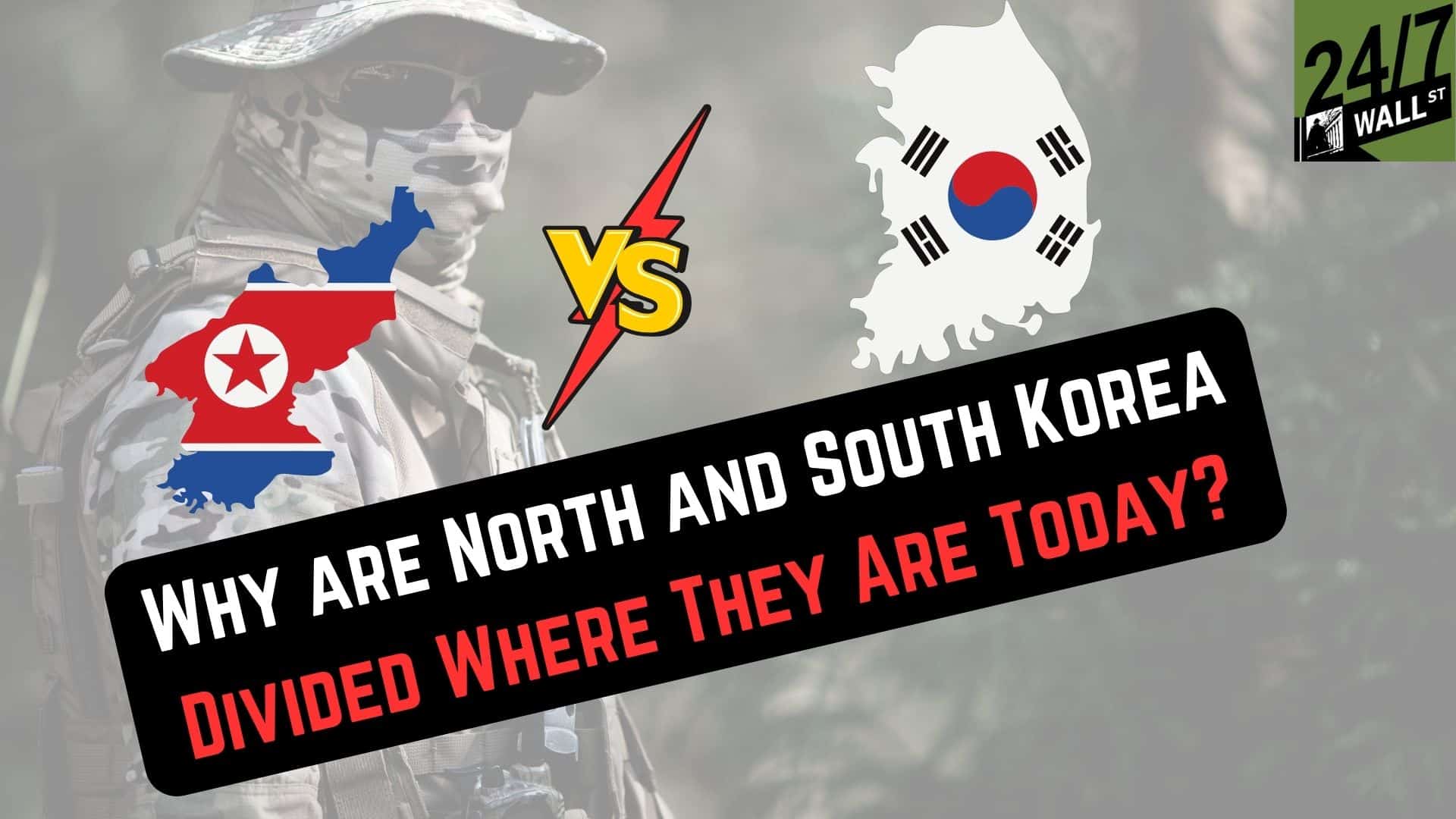
Key Points
- The current border between the countries isn’t the original line.
- The two nations are still technically at war.
- A 1953 armistice has held things together.
- Also: Discover the Next Nvidia.
Austin Smith and Michael Muir discuss the origins of the division between North and South Korea, emphasizing that the division along the 38th parallel was a temporary measure taken in August 1945. The border today was established by the front lines of the Korean War, which ended in an armistice in 1953. The divergent paths of the two Koreas began with different occupations: the Soviet Union in the North and the United States in the South. The North, under Kim Il-sung, sought unification by force, leading to the Korean War in 1950. Despite early successes, North Korea’s plans were thwarted by U.S. intervention, leading to a static battle line and an eventual armistice. The discussion highlights the political and military dynamics that led to the current division and sets the stage for exploring the economic bifurcation of the two Koreas.
Transcript:
Pause right there, because when you say August 1945, that means this is a demarcation line that’s existed for less than eight decades, roughly.
So on the spectrum of countries and nations, this is a very young situation that we’re talking about.
So what is it that led to this massive divergence and ultimately the Korean War?
Sure.
Well, the 38th parallel is not the border today.
The border we have today is established by essentially the front lines of the Korean War when it ended in 1953.
So what you have between 1945 and 1950, there’s a lot of things going on.
I’m not going to go through every single one, but the Cliff Notes version.
There were two different occupations of Korea.
In the north, you had the Soviet Union setting up a compliant regime under Kim Il-sung.
And then south of the 38th parallel, the United States occupation, which was a little less successful.
There was quite a lot of reasons for that.
America did, as we are surely aware, that the United States occupied several countries after 1945.
South Korea was probably the least successful of these.
Unlike the other nations that America occupied in the late 1940s, this was not a conquered enemy.
They initially were welcomed as liberators, but they didn’t really…
There was this feeling among some American occupying officials and troops that Korea hadn’t earned their independence.
And there was a bit of contempt.
And that contempt was a mutual feeling.
So the Republic of Korea was disjointed.
It was corrupt.
And it was seen as weak.
And the North was a little bit more unified.
And in 1950, the North was the stronger of the two Koreas, certainly militarily.
And Kim Il-sung and his regime, they wanted to unify Korea.
Likewise, the South did too, but they wanted to do so under their own ideology.
So in 1950, and again, this is a very brief version of the story, Kim Il-sung believed that the military advantage was his to press, and he wanted to complete the unification of Korea under his regime.
And China and the Soviet Union were.
Not terribly excited by this prospect, but the Soviet Union did draw up the battle plan that was used.
Kim Il-sung convinced Stalin that the US would not get involved.
There was a feeling that, not entirely unjustified, the US didn’t particularly care about South Korea at this time.
So Kim Il-sung assured Stalin that it would be a very quick war.
It’ll be over in a few days.
I mean, how many times in history have we heard that?
Famous last words for every country and every conflict on earth.
But of course, you know, we do have to talk about, you know, now the U.S. cares a lot about South Korea.
So there’s been this incredibly divergent economic outcome.
So let’s finish.
Let’s talk about the war a little bit.
And I’d love to talk about what has caused this incredible bifurcation of economies.
Yeah, absolutely.
So the Soviet Union drew up the battle plan and provided a lot of equipment, but they were very keen to make sure their fingerprints were not on this plan.
It was the last thing Stalin wanted was to a military confrontation with the United States.
So what happens in 1950?
North Korea launches the attack.
It goes very well.
Actually, Seoul’s taken in three days.
But what didn’t go to plan was that the United States intervened and intervened decisively very quickly.
There was a lot of occupying soldiers still nearby Japan.
So there were forces on hand to stabilize the line.
So North Korea sweeps across the peninsula.
The Republic of Korea just holds a toehold at the bottom.
It’s called the Busan perimeter.
So they managed to hold the line in August of 1950.
At the same time, the UN forms a multi-nation coalition to intervene.
It’s under the leadership of Douglas MacArthur.
It lands at Incheon.
Again, for those who are not terribly familiar with South Korean geography, that’s in the northwest of South Korea.
It’s about 18 miles west of Seoul.
There’s a landing there.
It goes very well.
They push the North Korean army back over the 38th parallel, and it looks like.
Unification is going to happen, albeit from the South.
And that’s when China gets involved.
And then there’s this kind of back and forth.
Again, it’s a very simplified version of the story.
But by around spring, summer 1951, the battle lines are largely static at this point.
There’s sharp disagreement between MacArthur and Truman as to how to continue this war.
Should it be escalated?
Should it be an all-out war?
Or should it just be a contained conflict?
And Truman naturally favors the latter.
And again, just kind of jumping forward a couple of years, there’s not a lot of movement.
And then there’s an armistice in 1953 that brings the conflict to a close.
The #1 Thing to Do Before You Claim Social Security (Sponsor)
Choosing the right (or wrong) time to claim Social Security can dramatically change your retirement. So, before making one of the biggest decisions of your financial life, it’s a smart idea to get an extra set of eyes on your complete financial situation.
A financial advisor can help you decide the right Social Security option for you and your family. Finding a qualified financial advisor doesn’t have to be hard. SmartAsset’s free tool matches you with up to three financial advisors who serve your area, and you can interview your advisor matches at no cost to decide which one is right for you.
Click here to match with up to 3 financial pros who would be excited to help you optimize your Social Security outcomes.
Have questions about retirement or personal finance? Email us at [email protected]!
By emailing your questions to 24/7 Wall St., you agree to have them published anonymously on a673b.bigscoots-temp.com.
By submitting your story, you understand and agree that we may use your story, or versions of it, in all media and platforms, including via third parties.
Thank you for reading! Have some feedback for us?
Contact the 24/7 Wall St. editorial team.



